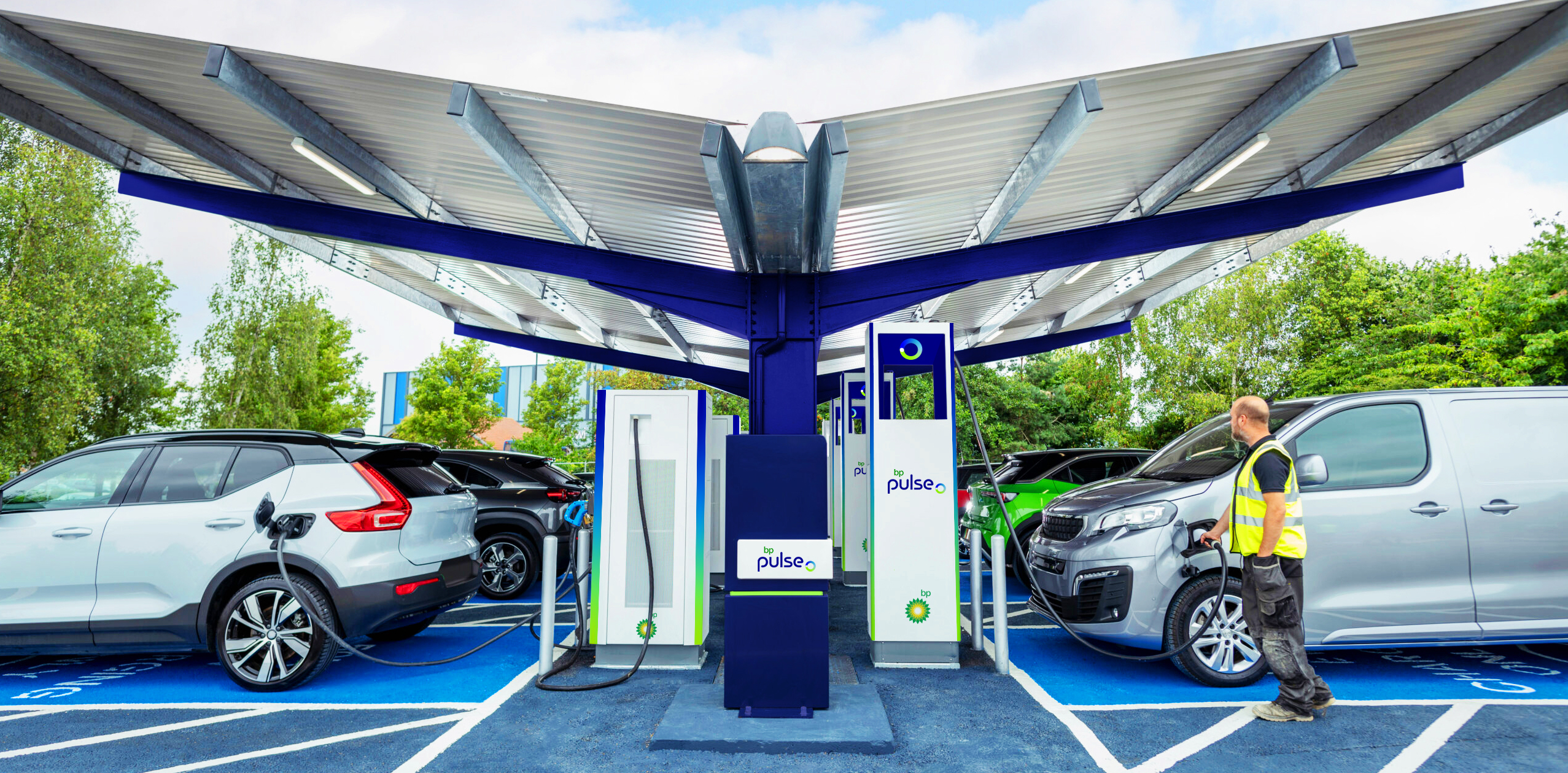managed charging
Reducing grid strain with automated load management for EV charging
Managed charging software with automated load management solves for growing demand on electrical grid
Summary:
- The rapid increase in EV adoption requires utilities to expand their electric grids
- Managed charging software that includes automated load management is a readily available solution for addressing the growing demand on the electrical grid
- Choosing the right EV fleet charging software is essential in saving costs of electrification and reducing strain on utilities

The rapid increase in electric vehicle (EV) adoption will require electric utilities to expand their grids. The challenge is to build new capacity in time to meet public policy targets that call for thousands more EV passenger cars, commercial trucks, buses, and off-road vehicles in the next decade.
All this expansion could be lengthy and costly. A 2022 forecast for EV charging in the state of New York estimates up to $28 billion in new distribution system upgrades are needed to meet state policy goals. This estimate assumed a high electrification scenario and unmanaged charging of consumer and fleet EVs. Unmanaged vehicles plug in and begin charging whenever they are not driving.
Managing charging using software that includes automated load management (ALM) is a readily available solution for addressing the growing demand on the electrical grid. That same 2022 forecast in New York estimated that managed charging could save ratepayers $11 billion.
How does ALM work for fleets?
Charge management software with ALM assesses the customer’s vehicle energy needs and optimizes their EV charging profile to fit within electric service constraints and utility tariff rates. Our Omega charge management software considers other fleet data such as vehicle state-of-charge, vehicle usage, and total charger load to ensure EV fueling is both energy and cost-efficient.
The objective is to minimize peak demand to lower costs and avoid overbuilt installations. The solution can also integrate distributed energy resources such as solar and battery storage.

Reduce peak energy demand
Omega manages fleet charging daily and can automatically adjust in response to extreme events. For example, during a heat wave when customer demand is high and approaches the maximum system capacity, utilities or system operators may call on customers to conserve electricity to avoid service outages. If called, the CMS could automatically react and use ALM to reduce charging demand, for example delaying vehicle charging until the utility lifts its call for demand management or by sharing power among several chargers on the same circuit.
During California’s historic heat wave in 2022, the California Independent System Operator (CAISO) issued Flex Alerts for nine consecutive days, calling for voluntary electricity conservation during peak hours. With transportation electricity demand in California projected to reach nearly seven percent of total statewide electricity demand by 2030, EV load management will become an increasingly crucial demand-side resource to utilities and system operators.
Install infrastructure faster
In addition to being a grid-friendly practice, EV fleets equipped with ALM can potentially connect with less “to-the-meter” infrastructure. CMS can limit power draw to the available utility service capacity. This could allow fleets to install a first wave of chargers under their existing service while the utility increases power to serve additional chargers.
It could also allow the customer to install more charging capacity with less utility infrastructure, using ALM to balance charging demand among the fleet of vehicles. Less infrastructure means less time needed to get the charging up-and-running. This is a huge benefit given that utility service interconnections can take 12-18 months to complete—even longer if grid upgrades are needed.
Managed charging software featuring automated load management (ALM) emerges as a tool to help mitigate electric grid challenges. This approach not only enhances grid reliability during peak demand periods but also could accelerate EV infrastructure deployment, offering cost savings and operational efficiencies essential for electrification efforts.
Go further

Learn more about Omega charge management software
bp pulse works with a variety of fleets, from transit buses to passenger vehicles, to reduce peak energy demand using ALM.
Date
31 July 2024
author

Brian Ross
Director Policy and Market Development - East
bp pulse fleet
Topics


